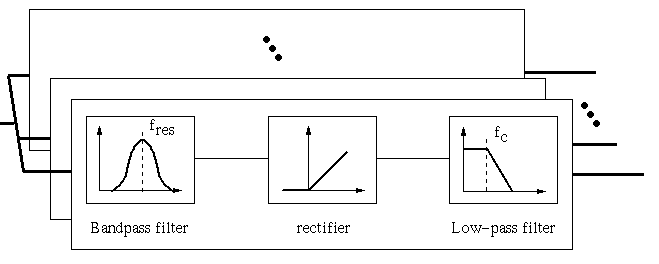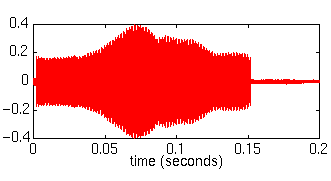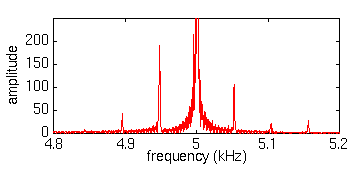
The received echoes are first preprocessed by two monaural cochlear blocks. These blocks implement a simple model of the processing going on in the cochlea of the bat: the basilar membrane is modelled by a set of parallel bandpass filters, the transduction of the movement of the membrane into neural activity by the hair cells is modelled by a halfwave rectifier and a low-pass filter.

The central frequencies and bandwidths of the bandpass filters depend upon the frequency structure of the call. For FM-swept pulses, they are distributed hyperbolically along the frequency range of the FM-sweep, and employ 4 kHz bandwidths. For CW-pulses, narrow filters (Q = 500) are centered around the fundamental of the CW-pulse. Echoes from moving targets, although they overlap with the transmission and echoes from stationary clutter in the time-domain, can be separated in these different frequency channels.
Shown below, the time-waveform and frequency spectrum of an echo containing the (AC) amplitude and frequency modulated reflections from a fan target, along with (DC) energy from the long (150ms) transmission and specular reflections from walls.

